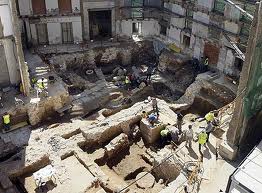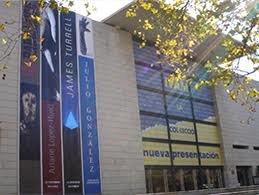Museums in Valencia

The third largest city in Spain, Valencia is a proper metropolis in terms of its size, nightlife, cultural scene and any other aspect you might want to consider. As such, it is not surprising it boasts some of the most impressive museums in the entire country. A city perfectly used to combining tradition with modernity, Valencia features everywhere, from the international sports calendar to the itinerary of the most devout seekers of Gothic art in the world.
Located on the northern edge of the so-called Costa del Azahar (Orange Coastline), Valencia is deeply conscious of its rich and varied history, not least through the high density of ruins and castles that still remain in the surrounding area. From Corbera to Sagunto, there is a palpable trace of medieval history around just about any corner. Part of the Crown of Aragón, Valencia has been an important mercantile point on the Mediterranean Sea since the Middle Ages.

Proud of its heritage, Valencia is a truly Roman city, established at some point of the 2nd century BC along the path of the Via Augusta, the route that connected present day Andalucía (then Baetica) with Rome. Located in a strategic point on the banks of the river Turia, Valencia truly emerged as a powerful city towards the XV century, when it flourished as one of the most important centres of trade on the international routes of the time. This is the period usually known as Valencia's Golden Age, to which correspond buildings such as the world-famous Lonja de la seda.
Indeed, a quick tour through the city's outstanding History Museum is advised my most Valencia city guides to gain a good understanding of the extent to which the settlement played a pivotal role in the economic development of the Crown of Aragón, once the most powerful sea-faring nation in the world. Back in the days when silk became a commodity like no other, the Lonja de la seda was the place where rolls and rolls of it were bought and sold in outrageous quantities.
If you are planning to stay for a substantial period of time in Valencia, then you should take the opportunity to visit the Prehistory Museum as well, as a means to complement your understanding of the development of mankind from the times of the Stone Age to the arrival of the Roman civilization into the Iberian peninsula. But not everything can be work and learning, and therefore we invite you to engage in other activities during your stay in Valencia: get to know the F1 circuit, attend a football match at the striking Mestalla stadium, or admire the facilities built for the America's Cup competition by the marina – even if the boats aren't there, it'll be worth the trip!

Indeed, in recent times, with the incorporation of Valencia to trendy competitions, such as the F1 and the America's Cup, Valencia has turned into one of the cool spots on the Mediterranean coastline. This has been mirrored in other areas of activities outside sports, such as the art scene, perhaps the most heavily pursued cultural aspect in the Spanish establishment over the past two decades. Valencia's IVAM – the Museum of Contemporary Art – was built before the great art rush reached the rest of the country, but since its opening in 1990 it has featured as one of the most respected museums of contemporary art in Spain.
Soon after the opening of the IVAM an ambitious project emerged: the creation of a large complex incorporating science and art and equipped with cutting edge facilities and the latest architectural designs.The project ran into all sorts of trouble, but it finally had a soft opening in 2000, while the rest of the architectutal group was completed. Since 2009 the City of the Arts and Sciences features among the most impressive places to visit in the country, so if you decide to learn or practice your Spanish in Valencia this is one attraction you cannot miss.
Valencia, a city of vast contrasts with a great cultural heritage and a long tradition, is also a place where you can enjoy the most mundane of pleasures and the highest levels of luxury, all without ever feeling an ounce of guilt, because, above all, Valencia is warm, welcoming and pleasing.



